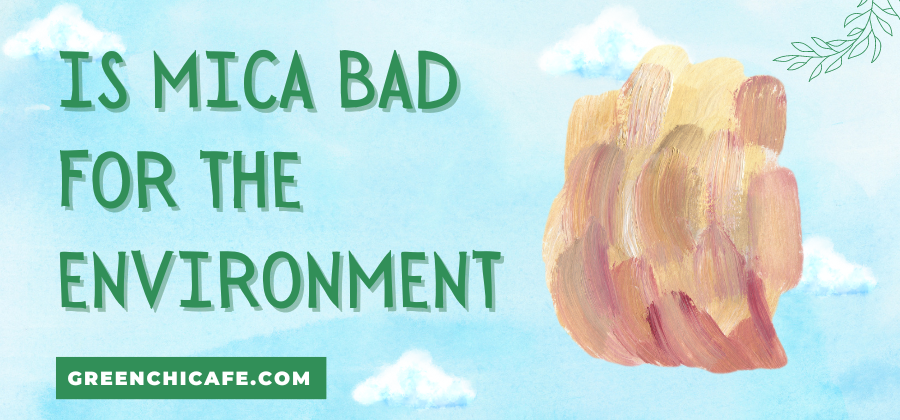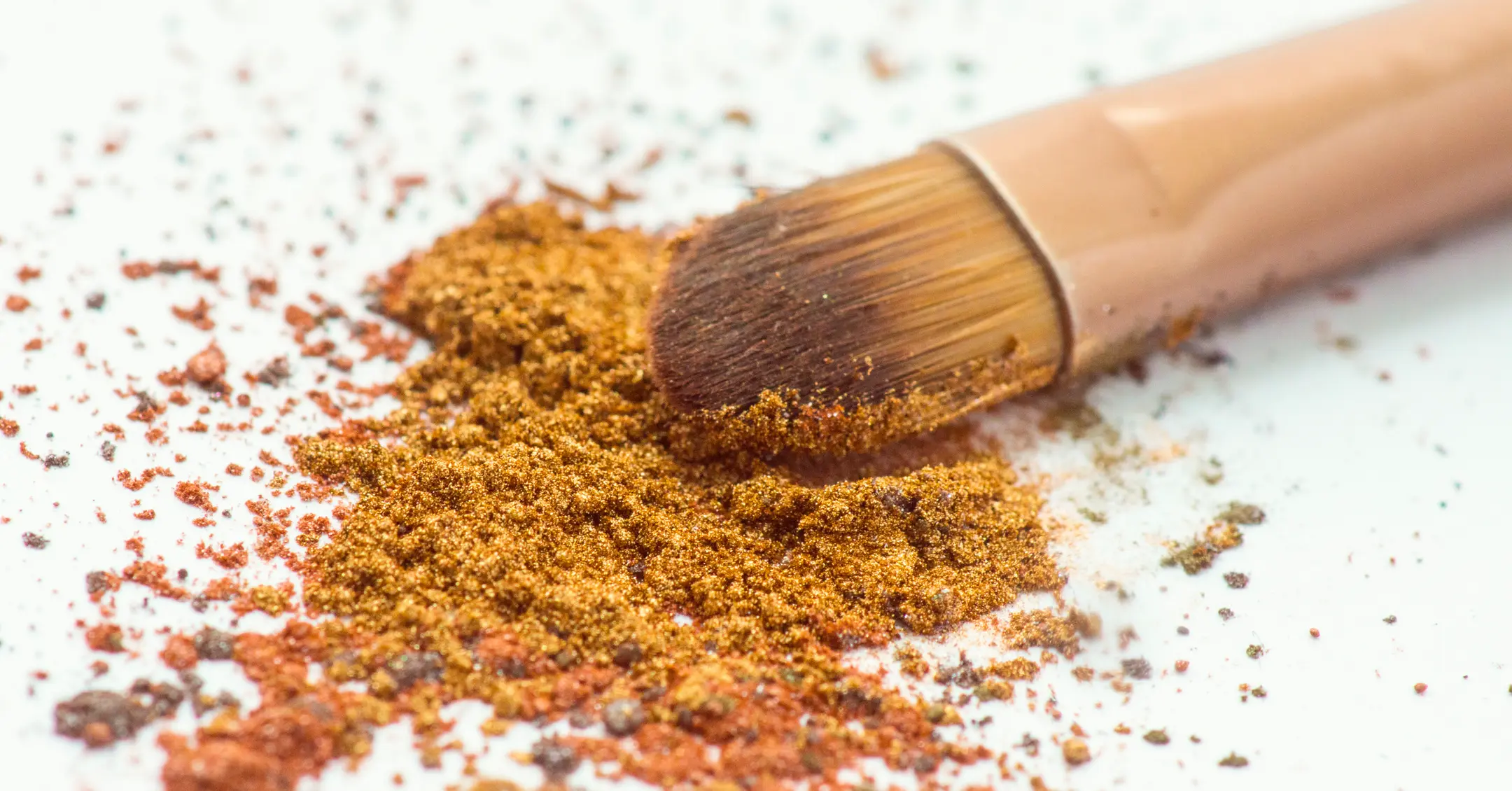Mica is a naturally occurring mineral used in everything from makeup to electronics.
Mica has raised concerns over its environmental impact and ethical sourcing.
This article explores whether mica is truly bad for the environment or if sustainable alternatives exist.
Is Mica Bad for the Environment?

Yes, irresponsible mica mining and contamination are bad for the environment, but synthetic mica offers a more sustainable alternative.
With proper oversight and responsible practices, mica’s negative impacts can be reduced.
Key Points
- Mica mining causes deforestation, soil erosion, and water contamination when not properly regulated.
- Excess mica dust and mineral runoff can harm aquatic ecosystems.
- Synthetic mica avoids the environmental damage associated with natural mica mining.
What is Mica and How is it Used?
Mica is a shiny mineral that can be ground into powder and used in various industries.
It has a layered structure that can be split into thin, transparent sheets.
These unique properties make mica ideal for cosmetics, paints, plastic, rubber, and electronics.
Ground mica gives products a pearlescent or metallic shimmer.
Mica has been used in makeup for thousands of years.
Today it’s found in eyeshadow, blush, nail polish, and lip products.
Mica also improves the strength and durability of plastics.
It acts as an insulator in electronics due to its heat resistance.
Overall, mica imparts brightness, shimmer, insulation, and strength across many modern products.
How Does Mica Mining Impact the Environment?
Irresponsible mica mining can lead to deforestation, damaged habitats, soil erosion, and contaminated waterways.
As mines expand, forests are cleared, and habitats are disturbed or destroyed.
This leads to biodiversity loss and threatens endangered species.
Surface mining techniques like strip mining contribute to soil erosion, especially during heavy rains.
Abandoned mines can leach minerals into nearby water sources.
Mineral tailings, mine water drainage, and dust also pollute the environment.
Furthermore, child labor used in hand mining churns up sediments that clog waterways.
While mining itself damages ecosystems, improper disposal of waste leads to additional environmental harm.
Is Mica Toxic to the Environment?
In small amounts, mica is not considered toxic.
However, high concentrations of mica minerals in soil and water can cause environmental damage.
Eroded mica that runs off into waterways increases water turbidity, reducing the light penetration that aquatic plants need to grow.
Large amounts of mica dust settling into rivers and lakes can suffocate fish by clogging their gills.
Excess minerals from mine drainage leaching into groundwater are also concerning for contamination.
Fortunately, synthetic mica alternatives like fluorophlogopite do not pose these same risks when improperly disposed of.
How Does Mica Mining Impact Human Rights?
Mica mining often relies on child labor in India, Madagascar, and other countries.
It’s estimated that 22,000 children work in mica mining in India alone.
Children as young as 5 years old are involved in hand-mining mica.
This hazardous work prevents children from getting an education and puts them at risk of injuries, chronic illness, and death.
Adult workers also face health hazards from working without protective equipment in poorly ventilated mines.
Lung diseases are common due to the inhalation of mica dust.
Governments have struggled to enforce labor laws and occupational safety regulations in the mica sector.
Do Makeup Brands Use Ethical Mica Sources?
Many cosmetic companies have pledged to eliminate child labor and exploitation from their mica supply chains.
However, the complex network of middlemen in the mica industry makes ethical sourcing a challenge.
Brands like L’Oréal and Estée Lauder are partnering with organizations like the Responsible Mica Initiative to improve transparency and fair working conditions.
Consumers should research brands to see if child labor is addressed in their ethics policies and mica sourcing.
Small indie brands may have more control over sourcing ethical mica than multinational corporations.
Can Mica Be Recycled?
Currently, there are no industrial-scale recycling systems for mica waste.
Spent scrap mica from manufacturing usually ends up in landfills.
Researchers are investigating methods to recondition and reuse scrap mica.
However, contamination makes recycling challenging.
Since mica is abundant and inexpensive, recycling has not been a priority.
But with rising sustainability demands, mica recycling could reduce waste and enable a circular production system.
More innovations in mica recycling will be needed for it to become economically viable.
How Can Consumers Support Sustainable Mica?
Consumers should research brands to see if they use synthetic mica or ethically sourced natural mica.
Purchasing from companies that adhere to fair trade practices helps shift the industry.
Writing to brands asking them to publish their mica supply chain policies can drive accountability.
Consumers can also limit purchases of mica-containing products when possible.
Supporting initiatives like the Responsible Mica Initiative boosts third-party oversight in the sector.
While individual actions alone cannot transform an industry, collectively they signal to companies that customers value ethical sourcing.
Will Mica Be Replaced in the Future?
For certain applications, mica may be replaced by other minerals or synthetic alternatives.
For example, boron nitride shows promise as an eco-friendly replacement for mica in cosmetics.
Using cellulose from plants provides similar opacity, shine, and texture.
As technology advances, more mica-free formulations will emerge.
However, mica still outperforms many other minerals in terms of thermal stability, electrical properties, and acid and alkali resistance.
These unique properties mean mica will continue to be valued, especially in electronics.
Rather than phasing it out completely, the priority is developing ethical mica mining and promoting synthetic alternatives when viable.
Overall, while mica itself is a natural mineral, irresponsible mining, and excessive environmental contamination can make it problematic.
Through ethical sourcing initiatives and innovations like synthetic mica, it is possible to reduce the negative impacts.
Consumers play a key role by demanding sustainability from brands.
With responsible practices, mica can retain its special properties that make it useful across industries, without costing human lives or environmental damage.
How does mica affect human health?
Mica mining exposes workers to fine dust particles that can be inhaled, leading to potentially fatal respiratory diseases over time.
Prolonged exposure to mica dust causes silicosis, which scars lung tissue.
Silicosis makes people more vulnerable to tuberculosis, chronic bronchitis, and respiratory failure.
In addition to the lungs, mica dust can negatively affect other organs.
Mica particles entering the eyes can cause conjunctivitis, and retinitis, and can scratch the cornea.
Small mica flakes penetrating skin tissue may result in dermatitis.
Furthermore, poor ventilation in mines leads to an oxygen-deficient environment.
Overall, mica mining significantly endangers human health without proper protective gear and workplace regulations.
When mica is used in cosmetics, it does not pose any health risks.
However, makeup containing asbestos, heavy metals, or other contaminants as a result of irresponsible mining can be dangerous.
Always check makeup ingredients and brands’ sourcing policies to avoid exposure to hazardous substances.
Synthetic mica alternatives provide shimmer without these health risks.
With ethical sourcing and safe manufacturing processes, mica can be used safely in consumer products.
However, the health of vulnerable mining communities must be prioritized.
How does the use of mica contaminate water?
Mica mining can pollute nearby waterways through direct discharge of mine water effluent or indirect runoff of waste.
Mine dewatering pumps out groundwater, which carries minerals that alter water chemistry once discharged.
Acidic water from mines lowers the pH of streams and rivers.
Mine water effluent also increases turbidity and total suspended solids in water by introducing more sediment.
This reduces light penetration, harming aquatic plants.
Mineral tailings and sediments washing into water bodies from improper waste storage smother riverbeds and lake floors.
Large quantities of fine mica dust settling in water can clog fish gills.
Furthermore, minerals leaching from mine waste contaminate groundwater, posing risks if used untreated for drinking water.
While mica itself is non-toxic, heavy metal contamination from mining operations is concerning.
Overall, poor handling of mining waste and drainage pollutes surrounding waters with suspended solids, acidic pH, and dissolved metals.
Should companies switch to synthetic mica?
Synthetic mica offers an environmentally and ethically sound alternative to conventionally mined mica.
Fluorphlogopite mica is manufactured in labs, eliminating mining’s detrimental impacts on forests, soil, water, and communities.
Brands like L’Oréal are pledging to increase the proportion of synthetic mica used across their products.
As technology advances, synthetic mica will become more cost-effective and available.
However, companies should not abandon responsible sourcing of natural mica completely.
For small-scale miners, mica provides vital income.
An outright ban could jeopardize livelihoods without alternate employment.
The priority should be empowering communities through fair trade and eliminating child labor—not blocking a source of income.
With proper regulations and working conditions, ethical mining is possible.
Synthetic mica is optimal when formulations allow, but natural mica has unique properties that may be preferred for performance.
Ultimately, brands should aim to balance synthetic mica with ethically sourced natural mica as part of a holistic sustainability strategy.
How does mica affect the soil?
Irresponsible mica mining and waste disposal contaminate the soil with heavy metals like iron, manganese, zinc, copper, lead, and cobalt.
Acidic water drainage from mines lowers soil pH.
Without proper land reclamation, excavated soil is highly prone to erosion.
Large-scale deforestation from mining also degrades soil quality over time by increasing runoff and reducing organic matter.
Mica dust settling on the ground for prolonged periods can deteriorate soil structure.
The smaller the mica particle size, the greater the impact on soil properties.
Large quantities of fine mica flakes in soil significantly reduce pore spaces, lowering permeability.
This affects aeration, moisture retention, and root penetration.
However, mica dust inputs from cosmetic use constitute an insignificant proportion of overall environmental mica.
The foremost concern is contamination and erosion from mining waste mismanagement.
With proper disposal and reclamation, mines can operate without long-term damage to surrounding soil quality.
The Key Takeaways
Mica can damage the environment through mining practices, but synthetic mica offers a more sustainable alternative.
Holding brands accountable, supporting innovations, and limiting consumption of mica products empowers consumers to make a difference.
Collective action is needed to transform mica into a truly ethical and eco-friendly mineral.
Frequently Asked Questions
What is fluor phlogopite mica?
Fluorphlogopite is a synthetic mica alternative that is manufactured in laboratories to avoid the environmental damage of conventional mica mining. It provides the same desired properties as natural mica.
How can I check if makeup contains ethical mica?
Research the brand’s website for their mica sourcing policy. Look for information on fair trade practices, local empowerment projects, and responsible sourcing initiatives that ensure no child labor.
Can companies trace their mica supply chain?
Full supply chain traceability remains a challenge in the mica industry due to the complex network of suppliers and middlemen. Organizations like the Responsible Mica Initiative aim to improve transparency.
What minerals can replace mica in cosmetics?
Boron nitride is one mineral that can provide similar texture, shine, and opacity as mica in cosmetics through plant-derived cellulose. More mica-free formulations will likely emerge as technology advances.
At GreenChiCafe, we are passionate about our fragile environment and ethical human rights. Please check out our website for more content on preserving natural ecosystems, sustainable living, and social justice.

Annie is a passionate environmental writer and activist. She has been writing about sustainability, conservation, and green living for over 15+ years. Annie is dedicated to raising awareness about environmental issues and providing practical tips for living an eco-friendly lifestyle. When she’s not writing, you can find her volunteering with local environmental organizations, teaching workshops on zero waste living, or exploring nature. Feel free to get in touch with Annie: annie@greenchicafe.com


